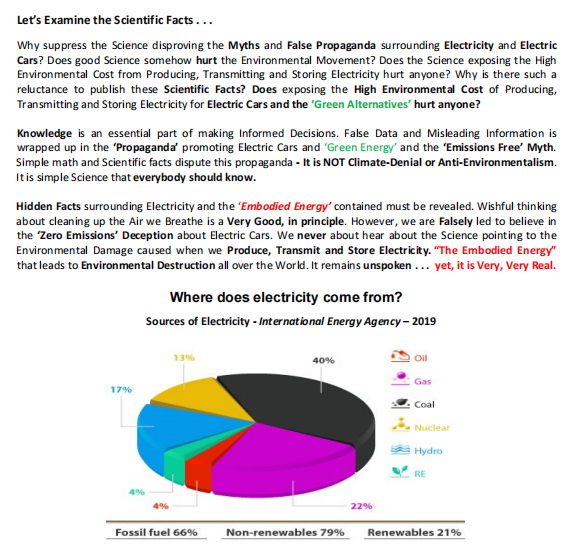A recently resurfaced Virginia Tech report claims that gas-powered vehicles emit less pollution than electric vehicles.
- EVs weigh 30 percent more than gas cars, causing tires to wear out faster
- The tire tread releases toxic particles 400 times greater than exhaust emissions
The study, which was published in 2022 but has gained new attention after being mentioned in a Wall Street Journal article, discovered that tires and brakes emit 1,850 times more particulate matter than do contemporary tailpipes with filters to lower emissions.
It was discovered that EVs are typically 30% heavier than gas-powered cars, which leads to premature tire and brake wear as well as the release of minute, frequently hazardous particles into the atmosphere.
According to Rakha, it is very difficult to distinguish the amount of microplastics released from gas-powered cars and electric vehicle tire treads because you have to separate the microplastics released from the tires from those that are already in the air.
In order to ascertain the amount of microplastics that gas and electric cars emit, Rakha and his colleagues at Virginia Tech are currently conducting field tests with traffic simulators that replicate an urban environment.
He went on to say that he doesn’t think there will be a significant difference between EVs and gas-powered cars; they anticipate it to be only 20 percent.

Rakha clarified that while electric cars are “slightly more efficient” they also produce a significant amount of CO2 during the charging process. OF course don’t forget that electricity is the USA is produced with non renewable fuels. So zero emissions is not accurate at all.
EV batteries can produce tire emissions that are almost 400 times higher than tailpipe emissions, and they weigh roughly 1,000 pounds more.
In severe situations, particle pollution can cause hospitalization, cancer, and early death in addition to aggravating existing health issues like heart disease, asthma, and lung disease.
It happens at the same time that California is attempting to outlaw all gas-powered cars by 2035.
New gasoline-powered cars don’t emit as much pollution as older ones do; in California, new cars only contribute 1% of all particulate matter (air pollution) emissions. Older cars produce the majority of the state’s emissions.
By upgrading the internal combustion engine trims to incorporate particulate filters that lower emissions to less than 1/1000th of a gram per mile, new gasoline cars are made to be “cleaner.”
The lithium-ion batteries in EVs make them heavier, which accelerates tire tread wear and ultimately increases emissions.
Despite California’s claims that electric vehicles (EVs) emit no emissions, the study discovered that tire wear produces more carbon emissions than an exhaust tailpipe.
Despite California’s claims that electric vehicles (EVs) emit no emissions, the study discovered that tire wear produces more carbon emissions than an exhaust tailpipe.
According to a study by the company Emissions Analytics, the primary distinction between tire and tailpipe emissions is that exhaust has a detrimental impact on air quality, whereas the majority of tire-released particulate emissions go straight into the soil and water.

According to the study, the materials used to make the tire determine how the composition of the tire affects performance. Most light-duty tires are composed of synthetic rubber, which is derived from crude oil. Natural rubber is supplemented with fillers and additives, some of which are known to cause cancer.
After at least 1,000 miles of driving, Emissions Analytics tested the tire wear on both gas-powered and electric cars. The particles emitted from the tread of each tire were sampled by the researchers using a sampling system, and the size of the particles was then measured.
It was discovered that because of the increased torque between the tires and the road, tire particulate emissions would release more quickly in vehicles with higher mass and weight.
As “consumers switch to bigger and heavier cars,” tires are expected to be a major concern in the upcoming years, according to a separate 2020 report by the Emissions Analytics firm.
The report went on, “Research indicates they contribute to air pollution from finer particles as well as marine microplastic pollution.”
In comparison to the gas-powered alternative, which weighs 3,000 pounds, the average Hyundai electric vehicle weighs more than 3,700 pounds. Volvo’s electric vehicle weighs 4,662 pounds, while its gas-powered counterpart weighs 3,726 pounds. However, the Ford F150 electric truck weighs an incredible 6,000 pounds, which is 2,000 pounds more than the gas-powered vehicle.
An EV’s electricity use contributes to additional air pollution and environmental issues.
Although California refers to electric vehicles (EVs) as “zero-emission vehicles” and says that prohibiting gas vehicles would protect the public from airborne pollutants like dust, dirt, and soot, the heavier weight of EVs significantly reduces how quickly tire tread wears out.
Although the public objected to the state’s proposal, which was made by the Air Resources Board, it stated that “it would be speculative to project” that EVs would not weigh less in the future. The proposal suggested that tire treads on EVs and gas vehicles wear out at the same rate.
It further stated that “weight reduction in other components or the vehicle body” might “offset” the weight of future EV models; however, the agency did not give any examples of how the weight would be decreased.








Recent Comments